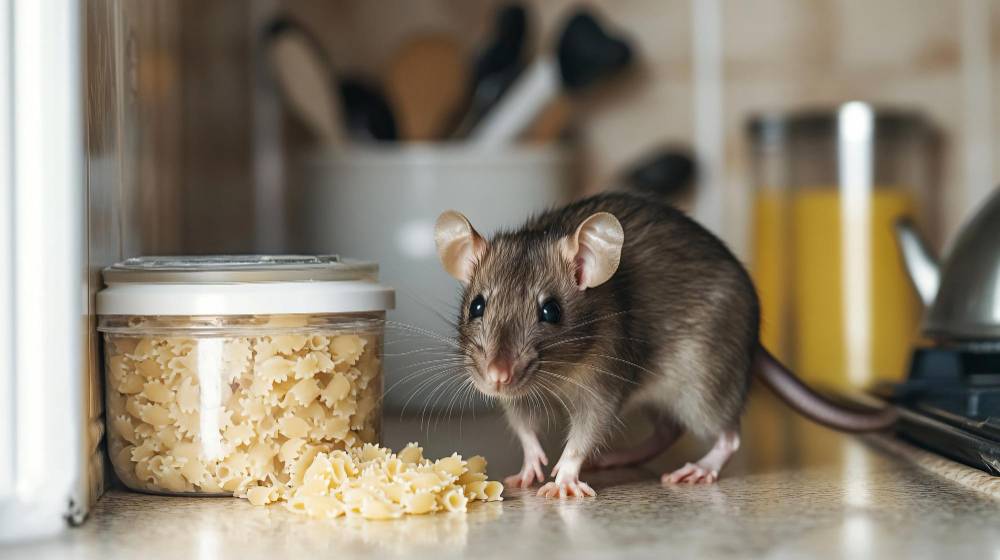Hosts Pest Prevention Toolkit: Essential Tips for a Pest-Free Home
Share
Pests can truly disrupt any homeowner's peace of mind. Whether youre running a charming bed-and-breakfast or simply looking after your own home, having a hosts pest prevention toolkit at your disposal is vital to creating a comfortable, pest-free oasis. This toolkit arms you with strategies and essential tools to tackle common pest challenges head-on. By understanding and applying these techniques, you'll save yourself from future frustrations and expenses.
Pest prevention goes beyond just removing these unwelcome visitors; its about crafting an environment where pests struggle to survive. With the right knowledge and tools, you can sustain a welcoming home for guests while keeping pests at bay.

What is a Hosts Pest Prevention Toolkit?
A hosts pest prevention toolkit encompasses various strategies, tools, and products aimed at helping property owners and renters safeguard their spaces from pests. This toolkit includes preventive measures, identification techniques, and solutions for common pest problems. By adopting a proactive stance, hosts can fend off infestations and preserve a healthy living environment.
Why is Pest Prevention Important?
Pest prevention is essential for several key reasons. For one, pests like rodents and insects can inflict considerable damage on property, leading to expensive repairs. Moreover, they may pose health risks by spreading diseases and triggering allergies. For those in the hospitality sector, maintaining a pest-free setting is crucial for upholding a stellar reputation and ensuring guest satisfaction. To delve deeper into the significance of pest prevention for hosts, check out this detailed guide.
Key Components of a Pest Prevention Toolkit
1. Inspection Tools: Conducting regular inspections is the cornerstone of pest prevention. Arm yourself with a flashlight, magnifying glass, and notepad to pinpoint potential problem areas. Keep an eye out for signs of pest activity such as droppings, nests, or structural damage.
2. Sealing Materials: Pests often find their way in through tiny openings. Use caulk, weather stripping, and mesh screens to seal cracks and gaps around doors, windows, and walls.
3. Traps and Baits: These are effective tools for monitoring and managing pest populations. Select traps and baits specific to the pests youre encountering, be it rodent traps or ant baits.
4. Natural Repellents: Essential oils like peppermint and tea tree oil can effectively deter pests without relying on harsh chemicals. Dilute these oils with water and spray around doors, windows, and potential nesting areas.
5. Professional Contacts: In some cases, enlisting professional pest control services may be necessary. Keep a list of reputable exterminators handy for any emergencies.
Effective Preventive Measures for a Pest-Free Home
Maintaining a pest-free environment demands ongoing attention and care. Here are some practical tips to help you keep your space pest-free:
- Regular Cleaning: Keep your home tidy by promptly cleaning up food spills, vacuuming regularly, and organizing clutter. Pests are attracted to both food and hiding spots.
- Proper Waste Management: Dispose of garbage regularly and use sealed trash bins to avoid attracting unwanted visitors.
- Landscaping Care: Trim back bushes and trees that are close to your home to eliminate any bridges pests may use to gain entry.
- Moisture Control: Address leaks and ensure proper drainage to lower moisture levels that pests thrive on.
For additional insights on keeping your rental property pest-free, dont miss this expert advice.
Identifying Common Pests
Recognizing common pests is key for successful management. Here are a few pests you might encounter:
Ants: These small insects frequently invade kitchens and bathrooms. Look for trails of ants and entry points, and consider using baits to manage them.
Rodents: Mice and rats can lead to major damage and health concerns. Spot them by looking for droppings, gnaw marks, and nesting areas.
Bed Bugs: These nighttime nuisances can cause itching and discomfort. Inspect mattresses and furniture for signs of an infestation, such as tiny blood stains and shed skins. For comprehensive information on managing bed bugs, explore this resource.

The Role of Technology in Pest Prevention
Today, technology plays an increasingly influential role in pest control. Innovations such as smart traps, which alert you when pests are caught, and ultrasonic pest repellents are becoming more mainstream. Utilize smartphone applications to monitor pest activity and access tips on effective prevention strategies.
Incorporating technology into your pest prevention approach can boost both the effectiveness and efficiency of your efforts. Interested in discussing how technology impacts pest control? Check out this forum for more insights.
FAQs About Pest Prevention
Q: How often should I inspect my property for pests?
A: It's advisable to inspect at least once a month. If you notice pest activity or during peak seasons, more frequent checks may be warranted.
Q: Are natural repellents effective for pest deterrence?
A: Absolutely! Natural repellents like essential oils can be effective when used consistently and along with other preventative measures.
Q: When should I seek professional pest control services?
A: If you face a significant infestation or find that your prevention methods arent yielding results, its best to reach out to a professional pest control service for help.
In summary, a well-equipped hosts pest prevention toolkit is crucial for maintaining a pest-free home or rental property. By heeding the tips and strategies presented in this article, you can safeguard your space, ensure the comfort of your guests, and uphold a strong reputation. Remember, proactive measures are the foundation of a pest-free environment.
